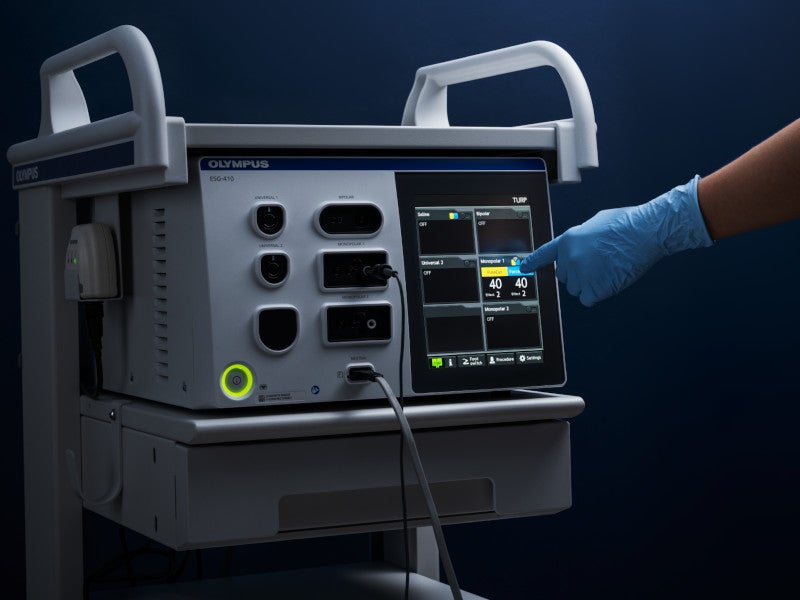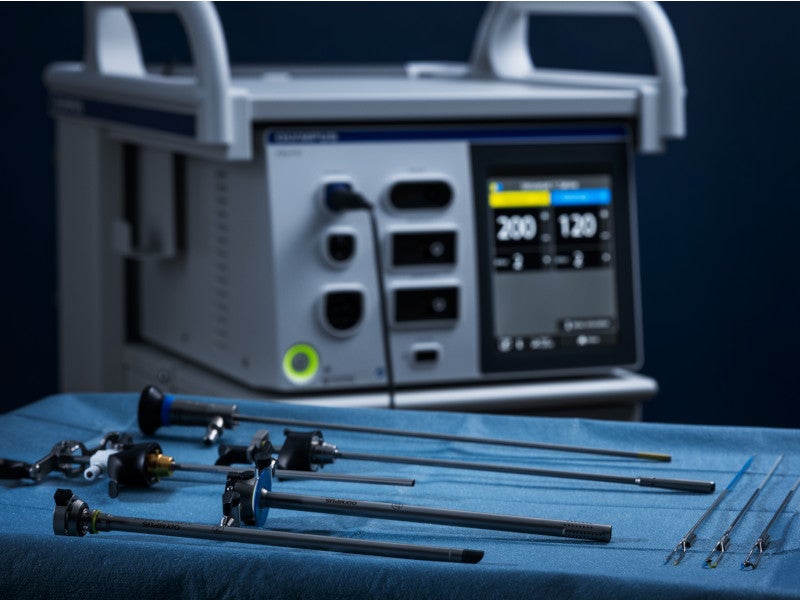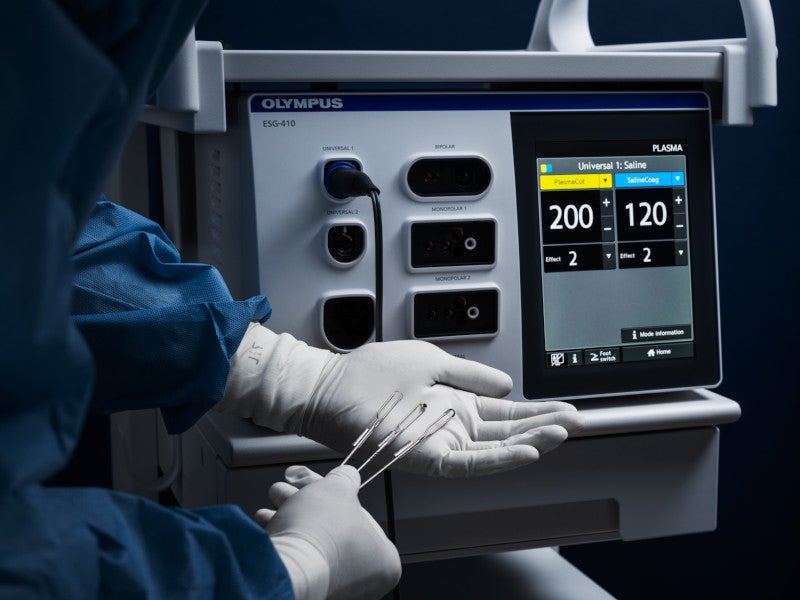ESG-410 Electrosurgical Generator is a next-generation radiofrequency electrosurgery medical device developed by Japan-based medical technology company Olympus to cut and coagulate tissue in open, laparoscopic and endoscopic surgeries.
The device is intended to treat non-muscle-invasive bladder cancer (NMIBC) and benign prostatic hyperplasia (BPH) or enlarged prostate.
NMIBC originates in the tissue of the bladder’s inner surface lining. BPH is a prevalent issue that impacts approximately 50% of men aged 51 years to 60 years and up to 90% of men aged 80 years and above. Plasma therapy is one of the prominent treatment options, which employs plasma energy to vapourise enlarged prostate tissue.
Launched in June 2023, the ESG-410 Electrosurgical Generator has larger capacitors compared to its predecessor, the ESG-400, facilitating better plasma stability during ignition.
ESG-410 Electrosurgical Generator details and features
The ESG-410 Electrosurgical Generator is an electrosurgical high-frequency (HF) generator designed to enhance precision during surgical procedures.
The fully-equipped HF generator measures 241mm high, 370mm wide and 501mm deep. It offers a faster ignition and improved plasma performance combined with lower energy input without tissue contact with large and medium band loops and oval buttons.
The device consumes less energy during ignition than its previous version, resulting in improved procedural efficiency for BPH resections. It is achieved through faster tissue removal facilitated by the dependable ignition of larger resection loops.
The device weighs 16.4kg and offers an array of resection loops, band electrodes and vapourisation buttons and needles. The use of large electrodes provides improved procedural efficiency. The device also features wireless foot pedals while wired ones are optional.
Control panel features
The control panel of the ESG-410 is divided into two main areas, a connection area with two monopolar, one bipolar and two Olympus universal sockets to connect various instruments and neutral electrodes for diverse surgical disciplines. It also has another area with a large 8.4in LCD touchscreen with a graphical user interface to show and modify the settings for ease of use.
The universal sockets feature Plug & Play functionality for all current and future bipolar Olympus devices.
A volume control knob is provided on the rear panel of the device to adjust the volume of the activation tone. A USB socket is also provided to connect a USB flash drive to export procedure settings or to upgrade the software. Also on the rear panel are a link-in and link-out connection for communication with peripheral equipment such as the Olympus UHI insufflation unit, three sockets to connect wired foot switches or receivers of wireless foot switches and a potential equalisation connector. The individual settings and updates can be transferred through USB.
Interface features
The ESG-410 Electrosurgical Generator incorporates a user-friendly interface to facilitate seamless integration into surgical workflows.
The intuitive touchscreen display enables surgeons to access and adjust settings effortlessly. The interface provides real-time feedback on tissue impedance, energy delivery and other critical parameters, empowering surgeons with accurate information to make informed decisions during procedures.
The streamlined user experience promotes efficiency and shortens the learning curve for operating room staff.
The device also seamlessly integrates with other surgical systems, promoting interoperability and connectivity. The integration enhances data sharing, documentation and collaborative decision-making, fostering a more comprehensive approach to patient care.









